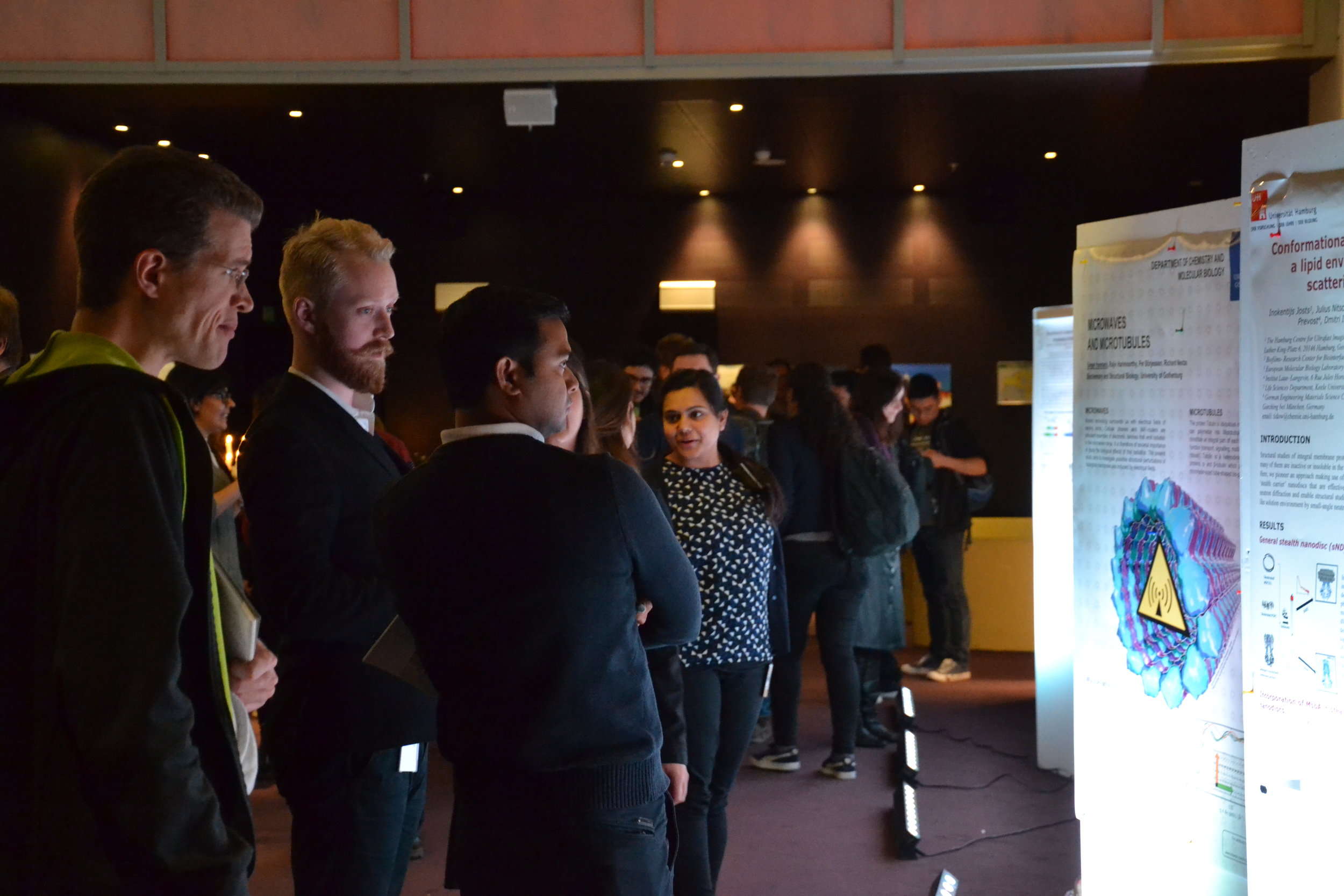ISB First symposium - Event summary
The aim of the meeting was to highlight cutting-edge research in the field of structural biology, with an emphasis on recent development in combining different structural biology methods, and to encourage new and old members of the structural biology user community to utilize these methods to address key scientific questions.
There was a very high interest in the meeting, which lead to it being fully booked ahead of the registration deadline. In the end, 122 participants attended the meeting (63 men and 59 women) of which 54% came from outside Lund University. The target audience was researchers at all levels from both academia and industry, all of which were represented at the meeting.
The meeting program was centered around 19 invited presentations (10 men and 9 women) and included 10 high-profile international keynote speakers, representing different areas of cutting-edge integrative structural biology and structural biology method development as well as 9 presentations by local (Sweden/Denmark) speakers, highlighting the basics of different methods and giving further examples of how they can be used. In addition, two clip sessions were held in which 10 presenters, the majority of which were selected from submitted abstracts, were given the opportunity to present their work in 5 min. Finally, there was a poster session during which anyone interested was allowed to present their work.
In addition to scientific presentations, the meeting included a panel discussion, led by professional moderator Lisa Kirsebom. Three panelists participated: Prof. Henry Chapman, (European XFEL, Hamburg), Prof. Christine Ziegler (Regensburg university) and Dr Frank Gabel (IBS, Grenoble). The aim of this discussion was to discuss the future of integrative structural biology, identify problem areas that need to be addressed and how LINXS can help to achieve this. Several points were raised, including potential issues in working towards long-term goals when there is a pressure for quick results, the need for validation methods for models produced from combined techniques and that the fast pace of experiments can prevent the deep learning which is needed to fully understand the methods and use them to their full potential. Suggestions for how LINXS can help to promote and strengthen integrative structural biology included a call-for-help service where researchers can post a problem, courses in methods and integrative approaches and to provide a platform and network where issues are continuously discussed and addressed and success stories can be shared and learnt from.

